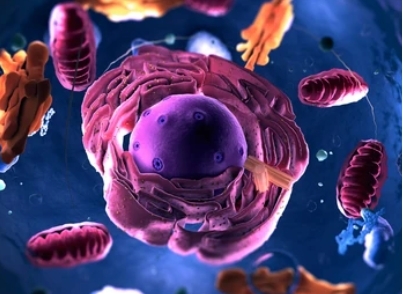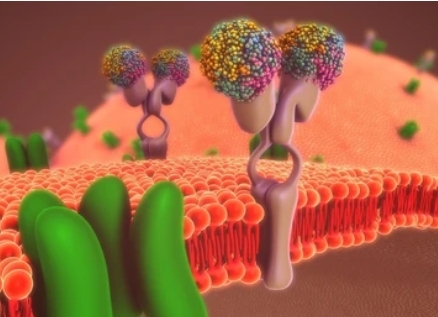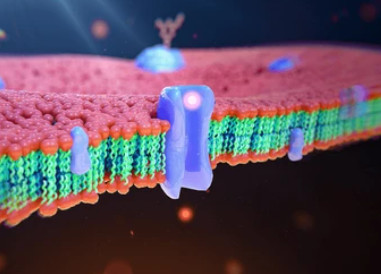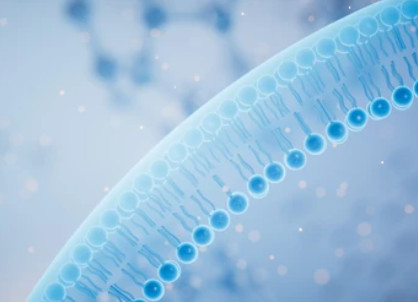Membrane Proteomics in Cell Communication
Online InquiryMembrane proteomics enables the comprehensive identification and quantification of membrane proteins present in various cell types and conditions. This deep profiling provides invaluable insights into the diverse array of receptors, transporters, adhesion molecules, and other membrane proteins involved in cellular communication. Creative Proteomics' expertise in this area has led to the identification of novel membrane proteins, expanding our understanding of cellular signaling networks.

Types of Cell Membranes and Membrane Proteins
Cell membranes serve as the guardians of cellular integrity, defining the boundaries that separate a cell from its environment. A plethora of cell membrane types exist, each tailored to specific functions. Plasma membranes envelop individual cells, maintaining their structural integrity and orchestrating the exchange of materials with the extracellular milieu. Intracellular organelles, too, are enclosed by membranes that enable compartmentalization and specialized functions.
Integral to these membranes are membrane proteins, which span the hydrophobic core of lipid bilayers. These proteins come in diverse flavors, each contributing to distinct cellular tasks. Ion channels, for instance, facilitate the flow of ions across membranes, crucial for electrical signaling. Transporters mediate the movement of molecules in and out of cells or organelles. Receptors recognize external signals and initiate intracellular responses. Adhesion proteins establish connections between neighboring cells or between cells and the extracellular matrix.
Learn more
Composition, Functions and Significance of Cell Membranes: Insights from Biomembrane Omics
Structural and Functional Relationships of Membrane Proteins
The structure-function relationship of membrane proteins is a marvel of molecular architecture. Helical transmembrane proteins weave through lipid bilayers, forming pores or channels. Beta-barrel proteins adopt a cylindrical shape, allowing molecules to pass through their central pores. The diverse structural motifs of these proteins empower them to perform their designated roles with precision.
Functionally, membrane proteins are integral to cellular survival and homeostasis. Signal transduction, the process by which external signals are converted into intracellular responses, hinges on the orchestrated activity of membrane receptors. Ligand binding induces conformational changes in these receptors, initiating a cascade of events that culminate in cellular responses.
The Crucial Roles of Membrane Proteins in Cell Membranes
Cell membranes are dynamic interfaces that not only separate a cell from its surroundings but also serve as hubs for intricate molecular interactions. Central to the functionality of these membranes are membrane proteins, which play diverse and indispensable roles in maintaining cellular homeostasis, enabling communication, and orchestrating vital processes.
Transport and Exchange
One of the paramount functions of membrane proteins is facilitating the movement of molecules across cell membranes. Transporter proteins, for instance, act as gatekeepers, selectively permitting the entry and exit of ions and molecules. Creative Proteomics' research has highlighted the significance of transporters in nutrient uptake, waste elimination, and ion balance. For instance, glucose transporters ensure a steady supply of energy by ferrying glucose into cells, while ion channels allow nerve cells to transmit electrical signals by controlling the flow of ions.
Cell Signaling and Receptor-Ligand Interactions
Membrane proteins, particularly receptors, serve as conduits for cellular communication. These proteins act as molecular switches, relaying signals from the extracellular environment to the cell's interior. Creative Proteomics' meticulous investigations have illuminated the intricate dance of receptor-ligand interactions. G protein-coupled receptors (GPCRs), a prominent class of membrane receptors, undergo conformational changes upon ligand binding, initiating downstream signaling cascades. These cascades, in turn, regulate diverse cellular responses, from neurotransmission to hormone secretion.
Cell Adhesion and Recognition
Cell adhesion is pivotal for tissue formation, immune responses, and wound healing. Membrane proteins known as adhesion molecules establish connections between neighboring cells or between cells and the extracellular matrix. For instance, integrins are membrane proteins that anchor cells to the extracellular matrix, facilitating cell migration, tissue repair, and embryonic development.
Structural Support and Shape
Beyond their functional roles, membrane proteins contribute to the structural integrity and shape of cell membranes. Creative Proteomics' research has revealed how certain membrane proteins, such as spectrin and ankyrin, stabilize the plasma membrane and provide resilience against mechanical stresses. These proteins form intricate networks beneath the membrane, conferring mechanical stability and enabling cells to maintain their shape.
Enzymatic Activities
Enzymatic activities within cell membranes are orchestrated by membrane-bound enzymes. Creative Proteomics' insights have underscored the importance of these enzymes in lipid metabolism, signal transduction, and other essential biochemical pathways. For example, membrane-bound enzymes called kinases play a pivotal role in phosphorylating target proteins, thereby regulating cellular responses to external cues.

Learn more
Technological Breakthrough: Membrane Proteomics to Analyze Cell Membrane Signal Transduction
Insights from Membrane Proteomics
Creative Proteomics' pioneering work in membrane proteomics has unveiled a trove of insights into cellular communication. By mapping the abundance and interactions of membrane proteins, this cutting-edge approach offers a panoramic view of cell signaling networks. Quantitative analyses reveal how protein expression levels change in response to stimuli, shedding light on cellular adaptations.
In conclusion, membrane proteomics has emerged as an indispensable tool in deciphering the intricate symphony of cell communication. Through the lens of Creative Proteomics' expertise, we have journeyed through the diverse landscape of cell membranes, explored the architecture and functionality of membrane proteins, and delved into the profound impact these proteins exert on cellular signaling. Creative Proteomics offer comprehensive membrane proteomics research services including membrane proteomics analysis, membrane lipidomic analysis, membrane Protein-molecule interaction analysis, among others. We play an important role in advancing membrane proteomics research.
Related Services
* For Research Use Only. Not for use in diagnostic procedures.






